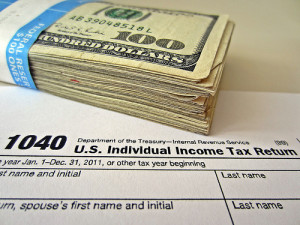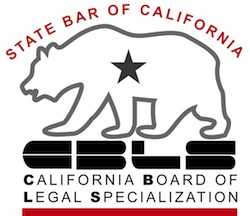Those considering filing a Chapter 13 bankruptcy worry about “what happens to my bank account?” Will the trustee take all the money? How do I pay my living expenses after I file? The short answer is: nothing changes. The account remains yours and available for all the expenses of day to day living. Because, in […]
Find The Hidden Mortgage Interest Tax Deduction In Bankruptcy
Is your Chapter 13 plan paying back mortgage payments that were delinquent when you filed bankruptcy? If so, a mortgage interest tax deduction lurks, unclaimed, in the trustee’s records. Track down that tax deduction, add it to your tax return, and you reduce your federal income tax burden. But it’s difficult because, for reasons I […]
Pay Off Credit Cards Without Interest: Bankruptcy For The Solvent
Once again, Chapter 13 rescued a client. He’ll get out of debt and pay off credit cards with no interest going forward. So many people tell me they could pay off the credit card balance if it wasn’t for the high interest. This client owned a home, had a job, and was solvent on paper, but […]
No House, No Discharge When Chapter 13 Goes Off Script
Sound the alarm. Chapter 13 bankruptcy cases are getting dismissed right and left when debtors fail to make mortgage payments. What began as a trickle of Chapter 13 cases ending badly has become a torrent. More and more, bankruptcy judges are strictly enforcing the direct pay term of Chapter 13 plans. If your plan says […]
Tax Deductions Hidden In Chapter 13
Don’t miss the tax deductions hiding in your Chapter 13 bankruptcy. The same, very important debts that your Chapter 13 plan pays are often tax deductible. And you are still the person who’s paying, even if the trustee writes the check. Don’t miss out on those deductions. Tax deductions in bankruptcy Let’s look at some […]
Cut Tax Penalties In Bankruptcy
Get in tax trouble and the tax penalties often grow huge. What starts as a manageable problem can soon tower over you. Breathe deep; there is a solution. Chapter 13 bankruptcy can cut tax penalties down to size. All tax penalties discharged in 13 Old or new, large or small, Chapter 13 discharges all unsecured […]
Does Bankruptcy Bar Retirement Savings?
Ongoing retirement saving by Chapter 13 debtors has been a touchy subject since the means test became a part of the bankruptcy scene. The means test was intended to squeeze every available dollar from consumer debtors. It works by limiting the expenses that can be deducted from income in figuring what a debtor can/must pay […]
Bankruptcy Without A Discharge: Why Chapter 20 Works
What does a Chapter 13 bankruptcy get you if it doesn’t get you a discharge? Lots, actually. It’s complicated. Powerful, but complicated. Let’s see how all the parts interact when your Chapter 13 is filed before you’re eligible for a discharge. Law limits discharge The bankruptcy code doesn’t limit when you can file bankruptcy; it […]
Chapter 13 Eligibility Greatly Expanded And Simplified
Congress has just expanded and simplified eligibility for Chapter 13 by enacting new debt limits. This is big news and long-awaited. Upon the president’s signature on S. 3823 on June 21, 2022, Chapter 13 debtors can have up to $2.75M in debts and qualify for the streamlined reorganization offered by Chapter 13. The previous, two-part […]
Protecting Your Co signor When You Can’t Pay
Cosigning a loan links you and your cosignor together for the life of the debt. If you get in financial trouble, your troubles are your co signor’s troubles too. If you can’t pay your debts, the standard bankruptcy discharge will get rid of your debt, but it doesn’t help your co signor. Even while you […]










